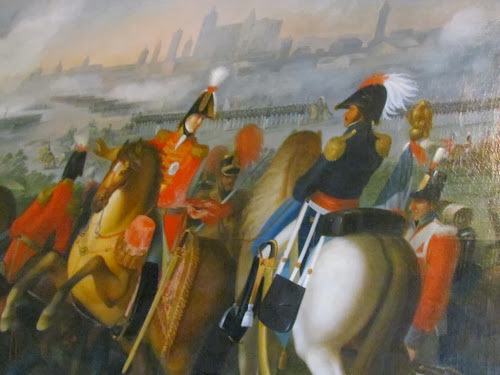Mafra is a city and a municipality in the district of Lisbon, on the west coast of Portugal, and part of the urban agglomeration of the Greater Lisbon subregion. The population in 2011 was 76,685, in an area of 291.66 km2. The municipality is bordered on the north by Torres Vedras, on the northeast by Sobral de Monte Agraço, on the east by Arruda dos Vinhos, on the southeast by Loures, on the south by Sintra and on the west by a coastline on the Atlantic Ocean. Despite being one of the largest municipalities in the region, Mafra represents only 3% of the population of the metropolitan area, and its population density (243 inhabitants / km2) is more similar to that of the western municipalities, being well below the metropolitan average.
It is mostly known for the sumptuous Mafra National Palace inscribed as a UNESCO World Heritage Site. Built in the baroque style, the Mafra National Palace also inspired Portuguese Nobel Prize laureate José Saramago to write his novel Baltasar and Blimunda (Memorial do Convento). Other points of interest around the municipality include the Tapada Nacional de Mafra, an enclosed wildlife and game reserve, and Ericeira's World Surf Reserve, the second in the world.
During the French invasion of Portugal in 1807, Napoleon made the Mafra Palace headquarters and garrison. Part of the army headed for Peniche and Torres Vedras under orders from General Luison, the remaining forces garrisoned in the Palace and Convent, while the executive staff requisitioned homes in the village. This lasted nine months, until 2 September 1807, when British forces were able to extricate the French from their positions. Meanwhile, Portuguese engineers, allied to British forces constructed a system of fortresses north of Lisbon, to secure the defense of the capital and expel the French. The Lines of Torres Vedras, as they were known, passed through the municipality of Mafra, and were constructed in 1809 and 1810.
Climate
The climate of the municipality of Mafra, under the strong oceanic influence, is moderately rainy and has significant territorial variability due to the relief and the relative distance to the ocean. In general, it presents low thermal amplitudes (both daily and annual), with mild minimum temperatures during the coldest months and a cool and windy summer during which there is a tendency for the formation of fog. The annual average temperature is around 15ºC, one of the lowest in the metropolitan area. The thermal amplitude and the minimum and maximum absolute temperatures are lower on the coast than in the interior. The annual average values of precipitation vary from 500 to 700 mm, spread over 75 to 100 days of rain per year, which vary according to the proximity to the coast and the altitude. The distribution of months in relation to the rainfall regime reveals a wet semester (October to March) and a dry semester (April to September). These values are conditioned by the Serra de Sintra, where it exceeds 1,000 mm of precipitation, spread over 110 days of the year. Air humidity remains high throughout the year, but especially during summer and along the coast. The annual value of relative humidity in the municipality is around 80%.In the metropolitan area, the northwest winds predominate, coming from the coastal zone and dragging with them, throughout the year, moist air, which causes morning fogs. The prevailing winds in Mafra are from the north and northwest, with moderate speed (an average of 16.6 km / h). In the transition between seasons, it is common for stronger southwest winds to blow. Insolation has the lowest values in December and January (130 to 140 hours), and the highest in July (280 to 300 hours). These values are lower in coastal areas, due to cloudiness.
HOW TO GET THERE
BY BUS
Built-in the 18th century by order of King João V (1689-1750) in fulfillment of a vow he made, to be blessed with an heir from his marriage to Maria Ana of Austria, or be cured of a serious illness, the Royal Convent and Palace of Mafra is the most important baroque monument in Portugal. All in limestone and marble from this region (Pêro Pinheiro and Sintra), the building covers an area of almost four hectares (37.790 m2), including 1.200 rooms, more than 4.700 doors, and windows, 156 stairways, and 29 inner yards and courtyards. Such magnificence was only possible due to the Brazilian gold that poured into the country, allowing the King to carry out his patronage of the arts and the strengthening of royal authority.
| TAPADA - MAIN ENTRANCE |
Meet the Tapada
Address :
Portão do Codeçal , 2640-602
Mafra
Portugal

- 💓💓💓💓💓Return to mainland Portugal &the Azores and Madeira islands







































































































































































































































